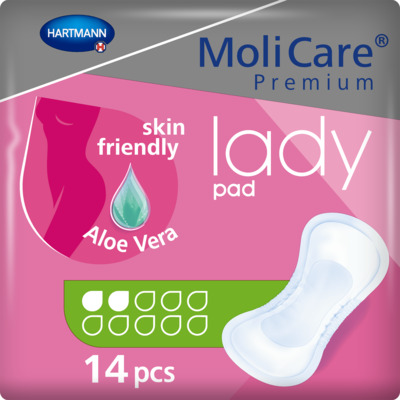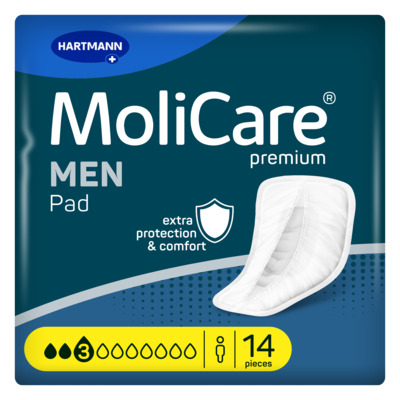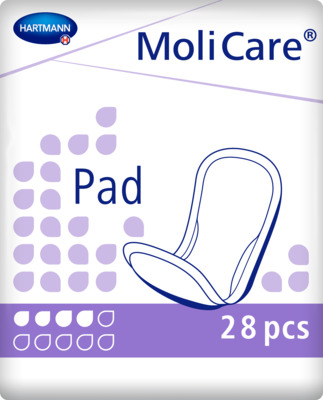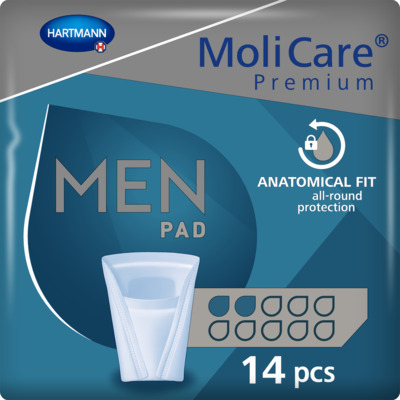Active living
Sport With Incontinence
For those that have been diagnosed with bladder weakness or incontinence, who are also really into fitness, they may worry that they may no longer be able to participate in sporting activities, such as walking and cycling. But we have good news for you! Did you know that you can continue to participate in sports and manage incontinence at the same time? You can also use our adult incontinence pants to help manage your incontinence during sporting activities.

Is There A Connection Between Sports And Incontinence?
Before you have been diagnosed with incontinence, you may be concerned whether any sport that you previously participated in could be a cause for concern. However, this is proven not to be true, and there is little evidence to support that sports, such as running numerous times a week, can damage the bladder.
However, during sports activities, there is a small possibility that you can leak urine due to pelvic floor muscles either being weakened or because the sport is having a bigger impact on your body than anticipated.
Sports With Incontinence
- Why You Should Continue Doing Sports Whilst Handling Incontinence
- Exercises To Avoid With Incontinence
- Stress Incontinence And Sports
- Tips Whilst Exercising With Incontinence
- Targeted Training For The Pelvic Floor
- Professional Advice And Support For Sports With Incontinence
- Other Ways To Relieve Pressure On The Bladder Whilst Exercising
- Living A Healthier Lifestyle With Incontinence
- FAQs
- Sources
Why You Should Continue Doing Sports Whilst Handling Incontinence
Just because you have incontinence, you shouldn’t let this deter you from continuing to play sports. In fact, doing regular exercise can increase your fitness, it will have a positive effect on the cardiovascular system and improve your mood. Incontinence and sport work well together in principle. However, some sports activities are more suitable than others for bladder weakness. Sports that you can still do whilst having incontinence include:
- Gymnastics
Moderate jogging
A paced walk
Pilates
Cycling
Swimming
Yoga
Hiking
Speed walking
Hula hoops
Pelvic floor exercises
Sports can even have a positive effect and relieve or prevent symptoms. Physical activity increases not only well-being but also helps to shed unwanted pounds. And less weight on the scales means less pressure on the bladder.
Products for you
Take a look at our incontinence products for slight incontinence
Exercises To Avoid With Incontinence
Of course, it is also important to be aware of sports activities that you should avoid when handling incontinence. These sports are usually more high impact which, with sudden, abrupt movements, can add further stress on the pelvic floor and the bladder. Avoid these activities:
Basketball
Football
Volleyball
Athletics
Tennis
Trampolining
Heavy weight lifting
Plunges
Jumping jacks
Squats
HIIT exercises (High Intensity Interval Training)

Stress Incontinence And Sport
Stress incontinence is an important issue in regard to bladder weakness and sport. For people with weakened pelvic floor muscles, physical exertion such as coughing, sneezing, laughing or playing sports often leads to unwanted loss of urine.
A recent survey discovered that among over 300 women, 47% acknowledged experiencing incontinence to some degree whilst exercising. This can be exacerbated by various symptoms that sport can lead to, including coughing and sneezing.
The most common causes of stress incontinence in women include hormonal fluctuations, pregnancy or the birth itself. In men the most common cause is prostate surgery, or prostate problems after surgery.
For more information about this condition, read our guide about stress incontinence in women.
Tips Whilst Exercising With Incontinence
Considering what we have highlighted about exercises that you should and shouldn’t participate in whilst handling incontinence, you should therefore train where possible on soft surfaces such as grass or sand courts. If you take part in a type of sport that is played on a hard surface, you can counteract the high impacts by wearing sports shoes with appropriate cushioning. You can also consult your healthcare professional about what types of sportswear is right for you when worn alongside incontinence pads.
You should also consider these tips below throughout your workout:
Do not consume a large meal before exercising
Do not over consume fluids.
Evacuate your bladder before working out.
Incorporate incontinence pads and light incontinence products to prevent leakages.
Opt for light exercises on soft surfaces, such as walking, swimming and pilates, and use light weight machines if you want to go in a gym, such as treadmills and the cross trainer.
Avoid heavy weight lifting which can put pressure on the bladder.
Targeted Training For The Pelvic Floor
Firm pelvic floor muscles offer the bladder the necessary support and can prevent bladder weakness. Using targeted training of the pelvic floor muscles, those affected by bladder weakness can relieve the symptoms of an existing condition and improve their quality of life. And the good thing about such training is that even five to ten minutes of exercise a day make noticeable improvements in the pelvic floor and can be easily integrated into a personal training plan and everyday life.
If you initially have problems squeezing the pelvic floor muscles, start with targeted tensing exercises. Squeeze the muscles as though you are trying to stop the flow of urine. Then relax the muscles. As soon as you can successfully do this first exercise, you can gradually integrate it into your training program. You should try to squeeze the pelvic floor muscles during activities such as yoga or pilates to actively train the muscles.
If, however, your pelvic floor has become damaged, this can lead to a hypertonic pelvic floor, so it is important to know how to manage that condition too, as well as what bladder-friendly drinks that you should consider consuming before, during, and after sporting activities.
Professional Advice And Support For Sports With Incontinence
To find the right type of sport for incontinence and to ensure that you are correctly training your pelvic floor, we recommend discussing these issues with your doctor. They can assess whether certain types of sport are good for you and whether they may be beneficial given how mild or severe your incontinence is. And particularly at the start of your training, it is recommended to seek the professional support of a physiotherapist.
Tip: It is all too easy to overestimate your abilities when training or even to play the wrong type of sport. And this can inadvertently have negative impacts on your pelvic floor.
Other Ways To Relieve Pressure On The Bladder Whilst Exercising
You should always drink plenty of water before, during and after training. This is because deliberately reducing fluids will not relieve pressure on the bladder. The bladder is additionally irritated because urine is more highly concentrated as a result of drinking less. If you have heart or kidney disorders, please talk to your doctor about possible restrictions on the volume of liquids you can drink.
It is important to be able to rely on being protected from bladder leaks during your workout. For a secure feeling and the necessary comfort when wearing sports clothing, discreet, shaped incontinence pads are recommended, like our molicare form pads. The first option can be easily fixed onto underwear using the wide adhesive strips while disposable pants, which resemble normal underpants, provide secure and discreet protection.
Living A Healthier Lifestyle With Incontinence
In conclusion, hopefully we have answered all questions that you may have had whilst considering sports with incontinence. Whilst it is still okay to do certain exercises whilst living with incontinence, such as walks, cycling, and swimming, you should perform these without too much intensity, otherwise this can worsen the effects of incontinence. Participating in sports activities with incontinence can overall aid your wellbeing.
FAQs
What exercises should I avoid with incontinence?
High-impact activities like jumping, running, and heavy lifting are best avoided with incontinence. Opt for low-impact exercises like swimming or stationary biking.
What are the worst exercises for incontinence?
Exercises that put excessive pressure on the pelvic floor muscles, such as plyometrics, trampolining, and certain weightlifting routines, can worsen incontinence.
What should you not do if you have incontinence?
You should avoid activities that strain the pelvic floor muscles, including sudden and forceful movements, as well as high-impact exercises that can exacerbate incontinence.
What worsens incontinence?
Factors that can worsen incontinence include obesity, smoking, excessive caffeine or alcohol consumption, and activities that increase intra-abdominal pressure, like heavy lifting or chronic constipation.
Is jumping bad for incontinence?
Yes, jumping is generally considered bad for incontinence as it places significant stress on the pelvic floor muscles, which can lead to leaks. Low-impact alternatives are recommended for those with incontinence.
Sources

MoliCare® Premium Lady Pad 2 Drops
<h2>Skin Friendly Pant Liners</h2> <p>For women that experience slight incontinence and bladder weakness, across different age groups, it can be a challenge to find the right bladder weakness product that is easy to apply and wear without the worry of potential leakages. Fortunately, we understand this approach, hence why we are happy to offer our MoliCare® Premium Lady Pad 2 drops, that is skin-friendly, Aloe Vera applied, and comes with 14 liners per bag.</p> <h2>Slim and discreet liners</h2> <p>Whether dealing with stress incontinence or urge incontinence, these panty liners offer a discreet and easy solution on the go. Simply place the pad in your underwear and secure it with the adhesive strip for all-round protection. Available in different absorbency levels, MoliCare® bladder weakness products cater to all levels of bladder weakness, ensuring secure care.</p> <h2>Control Bladder Weakness</h2> <p>Enjoy the benefits of these body-shaped absorbent panty liners, designed for women with bladder weakness. The pads offer discreet, reliable protection with features including odour control and fast absorption.</p> <p>With a wide adhesive strip, you can comfortably fix the pad in your regular underwear, providing secure and comfortable fixation. The pads are skin-friendly, featuring soft, breathable materials, including foam cuffs, and a top sheet treated with Aloe Vera.</p> <p>Keeping your skin healthy is a priority, which is why MoliCare® Premium Lady Pads have a skin-neutral pH value of 5.5 and an antibacterial finish. They are also dermatologically tested, offering peace of mind.</p> <h2>Buy pant liners online</h2> <p>Never worry about running out with our convenient order service and fast delivery direct to your door. Enjoy free shipping on orders over £50.</p> <p>If you need assistance, our professional customer service team is here to support you in choosing the right product. Reach out to us today at 0800 028 9470 and experience the comfort and reliability of MoliCare® Premium Lady Pads.</p>
MoliCare® Premium Men Pad 3 Drops (ISO 441ml)
<p><strong>Reliable and discreet incontinence pads for men with an instant-dry feeling</strong></p> <p>Bladder weakness is difficult to live with, the last thing you want to worry about is incontinence protection. That’s why our best-ever MoliCare® premium MEN Pad 3 drops offer an <strong>all-round protection</strong> that keeps everything dry and comfortably in place while fitting discreetly in your regular underwear.</p> <p>The incontinence pad for men quickly <strong>removes urine from the surface up to 86 %* faster than before</strong> and neutralises unpleasant odours to leave you feeling instantly dry and in control thanks to the new <strong>MoliCare SkinGuard</strong>®<strong> Absorbent Core Technology</strong>. This skin-friendly technology not only helps you feel up to 90 %* drier than previous MoliCare® premium<strong> </strong>MEN pads, it also helps to maintain healthy skin and preventing irritation.</p> <p><strong>Engineered for the male anatomy</strong> and dermatologically tested for maximum skin compatibility, these male urinary pads do not contain colour, perfume or latex making them environmentally friendly too.</p> <p>*Compared to last generation</p>
MoliCare® Pad 4 Drops
<h2>Handy MoliCare incontinence pads to carry on the go</h2> <p>Our MoliCare® Pad 4 Drops are an essential product for those experiencing slight incontinence, allowing you to regain control and live your busy and active life without the interference of bladder weakness. Designed for both men and women, this incontinence pad for men and women offers exceptional dryness and protection, ensuring your comfort and confidence.</p> <h2>‘Barely There’ Reassurance and Reliability</h2> <p>The MoliCare® Pad 4 Drops are slimline, discreet, and adjusted to fit your body seamlessly. It fixes securely inside your underwear, providing a ‘barely there’ comfort feel. With its soft and skin-kind fabric, along with a wide adhesive fixing strip on the backsheet, you can go about your day with the assurance of being protected against leakages.</p> <p>The absorbent core effectively prevents your skin from becoming too moist, while the elastic anti-leak edging adds an extra layer of security and peace of mind. Say goodbye to any worries about odours, as the MoliCare® Pad 4 Drops also neutralises odours to keep you fresh and confident throughout the day. Don't let incontinence hold you back from living life to the fullest.</p> <p>Ordering your MoliCare® Pad 4 Drops is hassle-free, as we offer fast delivery direct to your door. With our price match promise, you can trust that you're getting the best value for your money. Plus, enjoy free delivery on all orders over £50.</p> <p>If you need assistance in finding the perfect incontinence product for your needs, our friendly customer care team is here to help. Don't hesitate to reach out to us at 0800 028 9470. Take control of your life with the reliable protection and comfort of the MoliCare® Pad, alongside other <a href="https://www.hartmanndirect.co.uk/incontinence-products/incontinence-pads" style="color:#0563c1; text-decoration:underline">incontinence pads</a>.</p>
